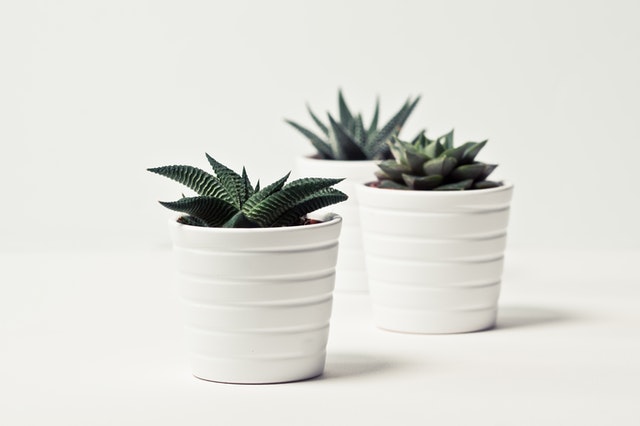Succulents give your garden a different look. They are easily taken care of, requiring minimum space and effort. You can beautifully decorate your garden, table, and rooms with succulents.
Maybe your succulent is droopy, and when you gently touch them they come out. These might upset you. But don’t you worry. We’ve got you covered. We will tell you why is your succulent droopy and what to do about it.
By maintaining some simple steps you can easily prevent these types of problems. As a friend let me help you with some of my experience and knowledge.
These plants are worldwide famous for their ornamental looks and are used as houseplants. Due to their architectural and sculptural shapes, succulents growing gives the owner a pleasant experience.
They just need proper guidelines to give you succulents the best shape. Succulent’s fleshy and evergreen leaves are their main attraction. But you may face some growing problems sometimes.
Why is My Succulent Droopy?
There are some typical reasons like overwatering, lack of sunlight, over-fertilizing, and extreme temperature behind the droopy succulents. You have to determine which problem you are facing and why. Then by taking some steps you can prevent dropping leaves.

Over-watering
Most people face watering issues. If you see your succulents are looking yellow or have a lighter color than usual your plant may be suffering from overwatering. They may also have mushy and soggy looking.
Due to the lack of drainage holes, it is often seen that water accumulates. Succulent roots can’t tolerate the excess water. Then it damages the roots, sometimes it causes the root rot. It may also soften the stem.
When you feel your succulents are overwatered immediately stop watering. You may repot your succulents. Make sure they are planted in a well-drained soil mix and have a drainage hole. This prevents the plant from getting wet for too long.
There isn’t any fixed amount about how many times you should water. With your index finger check the soil moisture. Water your succulents 2 times a week. If you see your roots have turned black or brown, cut off the roots or your plant may die.
Lack of sunlight
Lack of sunlight might be another reason why your succulent leaves are dropping. Succulents love sunlight. Your plant will grow sideways towards the light source or will stretch out. This will make the leaves thinner. Hence the plant will become droopy.
To prevent this problem, slowly introduce the plant to proper sunlight. If you do it quickly, it won’t be able to adjust. Your plant will die from sunburns or scorching.
Start with exposing your plant to indirect morning sunlight for 1 hour. After doing this for several days, shift with 6 hours of indirect sunlight. Slowly place your succulent beside the windowsill.
In the winter season, use 60 watt LED lights for 12-14 hours. Keep the light source 1-1.5 feet away from the plant.
Over-fertilizing
During the growing season, you need to feed your plant for the required nutrition. Fertilizers help your plant to grow. But if you overfeed or over-fertilize your plant it might do the opposite.
By using over fertilizer your plant will grow abnormally fast. This will cause soft tissue due to rapid growth.
The plant will also lack immunity. Overfeeding may cause damage to the roots. Thus it will be easily affected by pests and disease. Resulting in a droopy succulent.
Fertilize your plant once a month. If you see any white crust on top of the soil, remove them. These are the extra salt from your fertilizer.
Avoid using typical fertilizers for succulents. Rather use those which are lower in Nitrogen, and have an equal proportion between phosphorus and potassium.
Read the feeding requirements of your specific succulent plants. You may also find ready-made succulent fertilizers in supermarkets.
Extreme temperature
There are mainly two reasons. Extreme cold temperature and hot temperature. Succulents can tolerate a short dry period. But still, it can’t adjust with the over hot temperature sometimes.
Over 30°C might be problematic for your plants. Use white shade cloth to cover your succulents in summer.
In the winter season, covering won’t be enough. So move your plant inside of the house. If you can manage a greenhouse it will be the best. Succulents can’t bear quick temperature adjustments.
At night time keep your succulents inside. But in the daytime when there is enough sunlight, you expose your succulents beside your windowsill.
Remember it can’t survive in less than 4°C temperature. Be careful with your outdoor succulents. Most of cases succulents die of freezing problems. Waterless in winter or both the stem and leaves will become droopy.

Pests and disease
Pests and diseases may also cause your succulents to droopy. Be careful about snails and slugs. A chewed leaf can damage your plants’ beauty.
If you see any leaves with holes. These are probably caused by snails or slugs. Handily remove them or you may apply iron phosphate.
There are also aphids, spider mites, and mealybugs. Ensure a good air supply to keep these away. You may spray isopropyl (rubbing) alcohol diluted half-and-half with distilled water.
Check your succulents carefully once in a few weeks. When the soil is dry, take it out of the pots and examine the roots. If you see any problem, take preventative steps before it’s too late.
Bonus tip
There are some unfortunate things. When a succulent leaf drops a new one won’t grow out. They are only capable of growing from the top of the stems.
Succulents are easy to propagate. You can quickly increase the number of your succulents. Propagate them through cuttings and falling leaves. Though most of the succulents are grown from seeds.
Conclusion
The leaves of the succulents are the most ornamental part. Fleshy leaves and stems are signs of a healthy plant. Waterless but more.
Don’t overfeed your plant. Once a month is enough. Read the instructions for your fertilizers before you apply them. Don’t shift the temperature environment of your succulents quickly.
Slowly introduce the new temperature so that your plant can adjust. If your stem gets shifted that’s probably for sunlight problems. Rotate your container every day.
